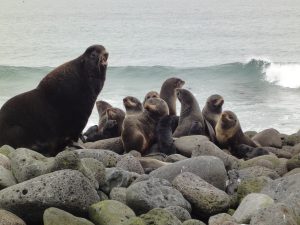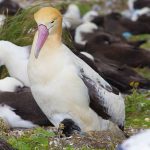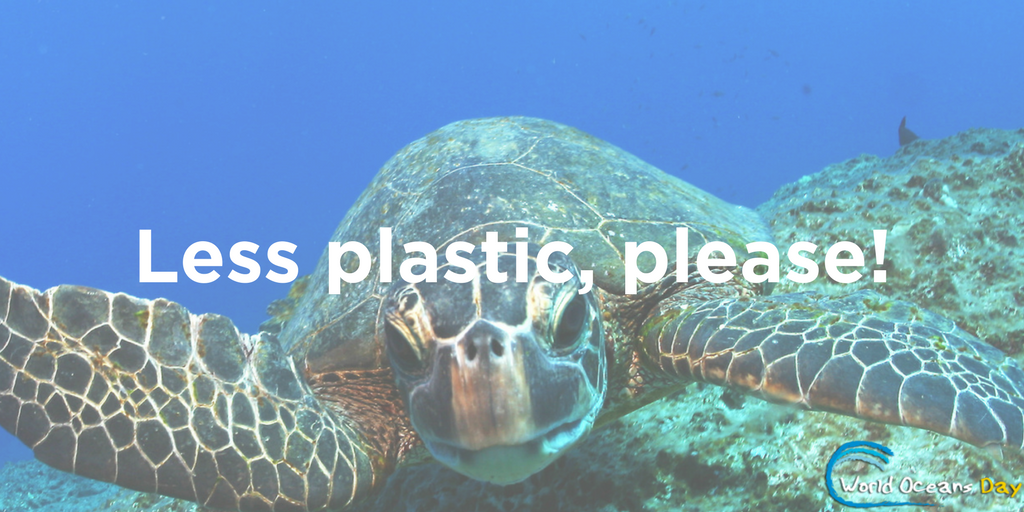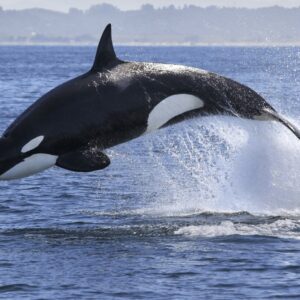World Oceans Day 2017 – Let’s Say No to Plastic

Guest blogger Rebecca Kennedy
This blog post was written by guest blogger Rebecca Kennedy.
Happy World Oceans Day! Today is a day to commemorate and do your part to help conserve ocean waters, which cover 70% of the Earth’s surface. The United Nations encourages people to “celebrate the significance and impact of the oceans around the planet, by highlighting their many contributions to human society, while recognizing the considerable challenges we face in maintaining the benefits that the oceans provide.”
Did you know? It was Canada’s idea to mark an international day to commemorate oceans. The Canadian government proposed this idea at the 1992 Earth Summit in Rio de Janeiro. In March 2017, in part with testimony given by Nature Canada, the Commons Environment Committee released a report that reiterated Canada’s 2010 commitment to protect 10% of Canada’s oceans by 2020. (Currently, only 1% is protected.)
The 2017 theme for World Oceans Day is “Our Oceans, Our Future,” the focus is the prevention of plastic pollution and marine litter in our oceans.
The rate and volume of plastic pollution and waste in the Earth’s oceans is shocking and, sadly, increasing. Three hundred millions of tons of plastic are produced annually, the majority for packaging and drink bottles. Of that number, only 5% is recyclable, and about 50% is used just once. The equivalent of one garbage truck full a day of plastic waste is dumped into the oceans, which adds up to a whopping eight tons of plastic debris annually.
Surrounded by three oceans, Canada has several species at risk that call the sea home, including the following:

Northern Fur Seal herd. Photo courtesy of NOAA Alaska Fisheries Science Center.
- The Northern Fur Seal (Callorhinus ursinus) makes its home in the northern Pacific. These densely coated creatures (300,000 hairs per square inch!) are found in their greatest numbers off the shores of British Columbia, a key area for foraging, during the year from January through June.
- The Porbeagle Shark (Lamna nasus) can be found in its greatest numbers in Canadian waters in the northwest Atlantic, from northern Newfoundland into the Gulf of St. Lawrence. They are one of the world’s most cold-tolerant sharks, preferring water temperatures colder than 18°C.
- The Sei Whale (Balaenoptera borealis) is a mammal whose geographic distribution and lifestyle are still largely unknown. Sadly, overhunting during the 1960s all but decimated its population. One of the world’s largest animals, these whales are found on both coasts of Canada and sometimes seen off of British Columbia and Newfoundland.
- The Northern Abalone (Haliotis kamtschatkana) is found along the Pacific Coast from Baja, Mexico, up to Alaska. In British Columbia, these thin-shelled mollusks face two main threats – the reintroduction of the sea otter and poaching. Under the Fisheries Act, all fishing of this species is completely banned; however, world demand for it is high and enforcement is difficult.
In addition, over 100 types of seabirds reside in Canada’s marine environments. Several of those are considered at risk, such as the following:

The short-tailed albatross, whose population once numbered in the millions.
- The Pacific Great Blue Heron (Fannini) is North America’s largest heron. Their habitats are the northern and southern coasts of British Columbia. Human encroachment such as logging or urban expansion has contributed to a sharp decline in their population.
- The Ivory Gull (Pagophila eburnean) can be found in the high Arctic and northern Atlantic or Pacific Oceans. Sadly, a survey taken during the early 2000s indicates an 80% decrease in population of this plucky pure-white bird with black legs.
- The Short-tailed Albatross (Phoebastria albatrus) breeds only in Japan but has been sighted along the shorelines of British Columbia at almost every time of year. Previously numbering in the millions, the global population today is estimated at only about 2,100. Commercial fishing and plastic waste in the oceans continue to contribute to their decline.
The survival of the above species and others is impacted significantly by the dumping of plastic and other litter in oceans. Fish, turtles, and other animals get can get entangled in debris or mistake litter for food. Seabirds will often pick up floating plastic litter and then feed it to their young, resulting in health issues pertaining to growth and general survival.
Let’s do our part to lessen the use of plastic in our everyday lives. Here are some suggestions:
- Stop buying disposable plastic beverage bottles, especially bottled water. Buy a stainless steel bottle to reuse and refill for when you’re on the go.
- Invest in a thermos or ceramic lidded commuter mug that you can take to a restaurant or coffeehouse (and often save a bit of change for bringing your own cup).
- Bring your own reusable cloth and produce bags to the grocery store and while shopping in general. Keep a few in your car and a foldable one in your day bag or purse so you always have an extra on hand.
- Recalibrate your lunch – pack food in reusable glass containers like Mason jars and bring your own non-plastic washable utensils. When going out to eat, bring along a reusable container from home – many restaurants still pack leftovers in Styrofoam or other non-recyclable materials.
- Make your own cleaning products so you don’t need to keep buying plastic bottles of cleaner. For how, see our recommended nature-friendly cleaning products.
- Use cloth diapers instead of disposables for your little ones. Even if you switch out a few days worth of diapers per week, you’ll make a huge difference.
- Contact your local representatives and our national leaders and urge them to protect Canada’s oceans from plastic and marine litter.
- Educate your family, friends, colleagues, and community about the importance of reducing plastic consumption and how to do so in their lives.
What are you doing to reduce or prevent plastic pollution in your life? Let us know! And thank you for doing your part to help our world’s oceans.

Acknowledgments: Clean Water Action, Fisheries and Oceans Canada, Plastic Oceans, Species at Risk (SARA) Public Registry


